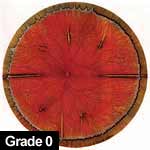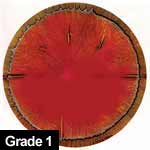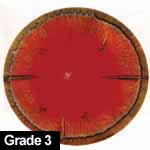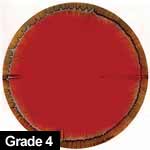Vitreous hemorrhage drug shows efficacy in clinical testing
Even though most study participants had diabetic retinopathy, a low incidence of retinal detachment was seen.
|
A drug intended to aid the clearing of vitreous hemorrhages appears to be safe in a large clinical trial, with patients having an attendant improvement in vision, one of the investigators said.
Marc D. de Smet, MD, PhD, an ophthalmologist with the University of Amsterdam Academic Medical Center, Netherlands, presented results of the phase 3 clinical trial of Vitrase (ovine hyaluronidase, Ista Pharmaceuticals) conducted in Europe, South America, South Africa and Australia, here at the European Society of Ophthalmology meeting.
Vitrase, a lyophilized preparation of purified ovine testicular hyaluronidase, is not currently approved by the European Agency for the Evaluation of Medicinal Products.
In the study, Prof. de Smet said a statistically significant number of patients treated with the 55-IU dose gained at least three lines of vision at 3 months follow-up. Vitrase also significantly reduced the vitreous hemorrhage density at months 1 through 3, with a low incidence of adverse events.
“Vitrase has a good safety profile with its intravitreous administration,” Prof. de Smet said.
Study
Prof. de Smet said the randomized, controlled trial evaluated the safety and efficacy of Vitrase at centers in Europe, South America, South Africa and Australia. In the study, a single injection of Vitrase (either 55 IU or 75 IU) was compared to an injection of a saline control.
Patients in the study were required to have a grade 3 or 4 vitreous hemorrhage for at least 1 month in duration before study entry and visual acuity of worse than 20/200. Patients with a history of retinal detachment, retinal tears or breaks were not eligible, Prof. de Smet said.
A total of 556 patients were included in the study: 186 patients in the 55-IU dose group, 180 in the 75-IU dose group and 190 in the control group.
Participants averaged 62 years of age and were mainly white, with a proportionate number of men to women. Roughly 70% of patients were diabetic, with proliferative diabetic retinopathy being the main underlying cause of hemorrhage, Prof. de Smet said. Other causes include retinal vein occlusion, age related macular degeneration and a few cases of hemorrhagic posterior vitreous detachment. At study entry, the mean duration of hemorrhage was 3 months, and more than 90% of patients could not read any letters on the eye chart.
| Grades of vitreous hemorrhage | ||||||
| ||||||
Reduced hemorrhage density
Prof. de Smet said there were four clinically relevant efficacy endpoints designed into the study, although reduction in vitreous hemorrhage and improvement in best corrected visual acuity were the two endpoints presented. Researchers looked for a reduction in density from grade 3 or 4 to grade 0 or 1 and an improvement in visual acuity of at least three lines to qualify a patient as a success.
Prof. de Smet said patients in the 55-IU group (20%) showed a statistically significant reduction in hemorrhage density at 1 month compared to 11% of patients in the control group. This statistically significant difference was maintained out to 3 months.
There was a trend toward improvement in 75-IU patients, Prof. de Smet said, but it was not statistically significant.
At 1 month, a statistically significant number of 55-IU patients (33%) had three lines of improvement compared to 23% of control patients. This difference was maintained out to 3 months, with patients in the 55-IU group and 33% of control patients having at least a three-line improvement.
Prof. de Smet said there was no statistical improvement for 75-IU patients, but there was a trend toward improvement over the 3-month period.
“A single intravitreous injection gives a statistically significant reduction in hemorrhage density in the 55-IU group at months 1, 2 and 3. This is clinically relevant, allowing earlier diagnosis and treatment of patients,” he said, noting the significant improvement seen in BCVA.
Adverse event profile
Systemic adverse events were similar in both Vitrase treatment groups and in the control group, Prof. de Smet said. Iritis accounted for the majority of ophthalmologically important ocular adverse events, with a higher incidence in both Vitrase treatment groups compared to the control group.
Iritis occurred in 40% of 55-IU patients and 43% of 75-IU patients; hyperemia in 37% of 55-IU patients and 39% of 75-IU patients; and pain in 22% of 55-IU patients and 28% of 75-IU patients. These incidences were statistically significant when compared with the control group (iritis 19%, hyperemia 25% and pain 12%), Prof. de Smet said.
Prof. de Smet said the majority of cases of iritis were mild to moderate. All cases resolved either spontaneously or after treatment with topical medications. Ocular pain was mainly transient and usually resolved after 2 weeks.
There were a few cases of sterile hypopyon, but no cases of endophthalmitis, he said.
Regarding retinal detachment, Prof. de Smet said there were no discernable differences among the three groups. Rates of retinal detachment did not reach statistical significance and were not associated with use of Vitrase. There was one case of rhegmatogenous retinal detachment and one tractional retinal detachment in the 55-IU group.
“But you have to realize this was ... out of 186 [patients] in a patient population that is mostly diabetic. You might expect this would happen,” he said.
“If you look at when the retinal detachment occurred, the vast majority tended to occur after 3 months, which was the end of the study,” he added.
For Your Information:
- Marc D. de Smet, MD, PhD, can be reached at the University of Amsterdam Academic Medical Center, Meibergdreef 9, Room G2-217, Amsterdam 1105 AZ, Netherlands; +(31) 20-566-3455; fax: +(31) 20-566-9053; e-mail: m.d.desmet@amc.uva.nl. Prof. De Smet was a paid clinical investigator in the Ex-North America study.
- Ista Pharmaceuticals, developer of Vitrase, can be reached at 15279 Alton Parkway, Suite 100, Irvine, CA 92618 U.S.A.; +(1) 949-788-6000; fax: +(1) 949-788-6010.





